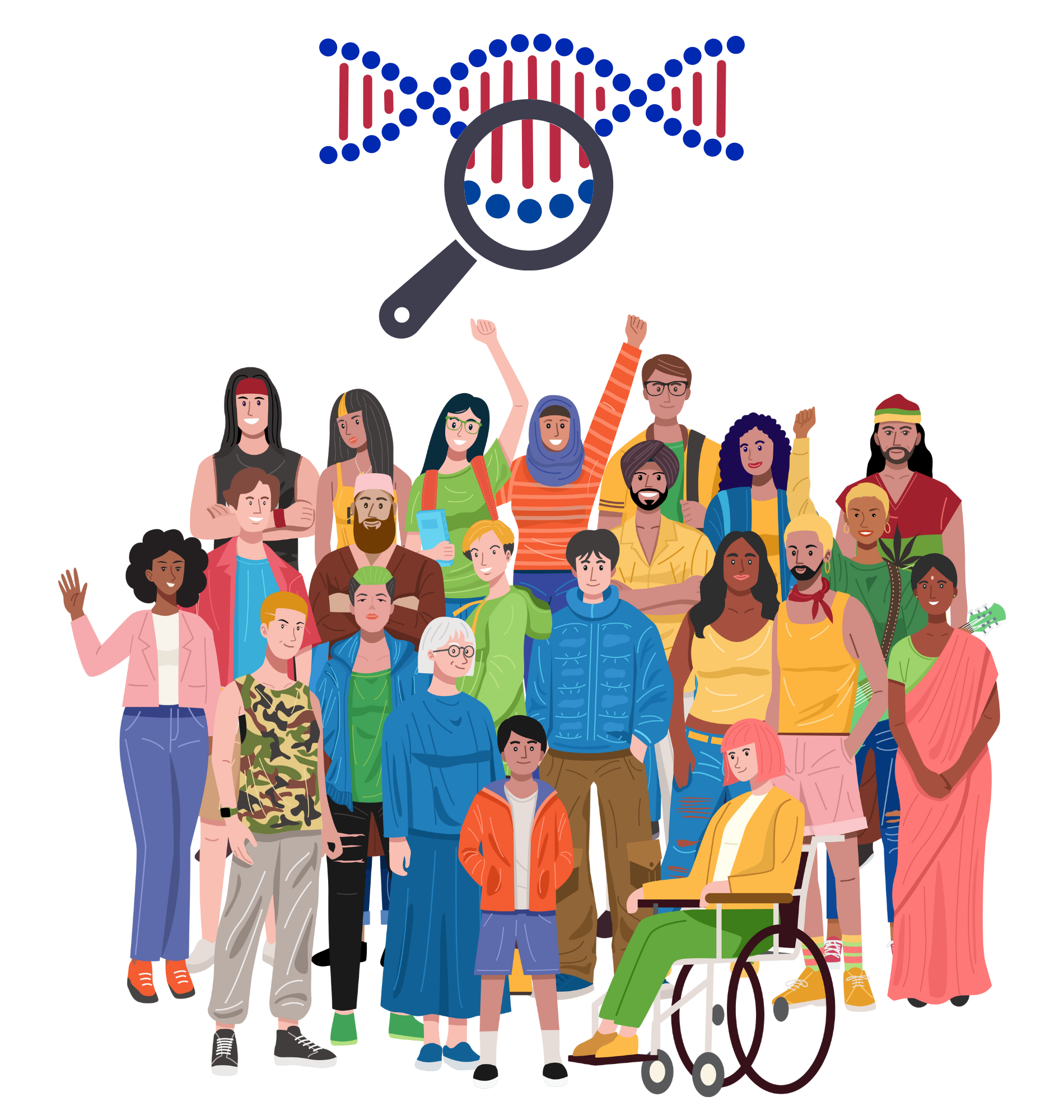What Is This Project About?
In this project, we are working to improve Type 1 Diabetes (T1D) screening in Canada by collecting genetic data (information about our genes) from people with different backgrounds. We want to find the best way to use genetic risk scores (a number that shows how likely someone is to develop a health condition) to predict T1D in people living in Canada from all backgrounds. This will help doctors screen for T1D more fairly and accurately for everyone.
Why Is This Important?
Right now, the tools used to predict T1D work well for people of European descent but not as well for people from other backgrounds. The reason is that our genes can be very different, and current tests do not always work the same way for everyone. This project will help us create more useful tests for people from South Asian, East Asian, African, and other backgrounds living in Canada.
The Problem with Current Genetic Risk Scores
Current genetic risk scores (like GRS2) were made using information mostly from White Europeans. These scores are not as accurate for people from other backgrounds because:
- People from different backgrounds have different genes.
- Some gene variations only show up in certain populations. This means that certain changes in people’s DNA are found more often in specific groups of people.
- Risk factors for T1D can be different for people from different backgrounds and living in different locations. This means that the conditions that can make someone more likely to get T1D vary depending on their family history, genes, or environment.
In past studies, a genetic score made with European data worked well for people of European and Hispanic ancestries, but did not work as well for people of African American or Asian ancestries. So, we need to make better scores that work for everyone.

What Are We Trying To Do?
- Create a data collection of genetic information from people with different backgrounds who have T1D in Canada.
- Test the current genetic risk score (GRS2) and try a new, more inclusive one that uses data from different populations to see which one works best for people of South Asian, East Asian, African, and other non-European ancestries living in Canada.
How Will We Achieve This?
We are combining genetic data from people with different backgrounds and using new methods to create a better genetic risk score. This will help us understand how different genes affect people with T1D from different backgrounds.
In this project, we will:
- Create a genetic database for people with different backgrounds who have T1D in Canada. This means collecting and organizing genetic information from people with T1D in Canada. It will help researchers better understand how the disease affects different groups and improve tests for everyone.
- Test the current genetic risk score (GRS2) and the new combined genetic score to see which one works better.
Methods Used In This Project
Participants:
We will use information from people with T1D in Canada and compare them to healthy people (called controls) with similar backgrounds. The healthy controls are from the ‘Spit for Science’ study at The Hospital for Sick Children (SickKids), led by Dr. Jennifer Crosbie.
We will also gather data from several other studies:
- The T1D Montreal Children’s Hospital biobank (Dr. Angeliki Makri).
- The BC Children’s Hospital T1D biobank (Dr. Constandina Panagiotopoulos).
- The EVERYONE study (Dr. Andrew Paterson).
- The BETTER registry and CREATE-1 biobank (Dr. Rémi Rabasa-Lhoret).
We will also collect new DNA samples from people with T1D in Montreal (Dr. Despoina Manousaki), Edmonton (Dr. Elizabeth Rosolowsky), and Calgary (Dr. Carol Huang).
GRS Calculation:
We will take DNA samples from blood, saliva, or dried blood spots. These samples will be tested at Genome Quebec. We will use a special tool called the Illumina Global Screening Array to look at the genetic information. After checking the quality of the data, we will fill in missing information using the NHLBI TOPMed reference panel, which includes data from different populations.
To calculate the genetic risk score (GRS), we will:
- Look at certain parts of the DNA that are linked to T1D.
- Multiply the number of times these risk genes appear by their effect on the disease.
- Add up the results to get a single score for each person.
We will then adjust the score based on other factors like sex, age, and ancestry (background). The goal is to see if this score can help predict if someone will get T1D. We will check how well the score works using performance measures like the Nagelkerke R² and AUROC (how well the score can separate people with T1D from those without).
Future Plans:
The new combined genetic risk score (using data from different ancestries) may be more accurate for people from non-European backgrounds than the current GRS2. If the new combined score works well, we will use it in a pilot screening program. If it does not work as well, we will continue using the GRS2.
Why Is It Important for Canada?
Canada is a very diverse country with different genetic ancestries. Right now, the tools used to screen for T1D do not work as well for people from non-European backgrounds. This project aims to make sure that all people living in Canada, no matter their background, can have access to accurate and fair screening for T1D.
